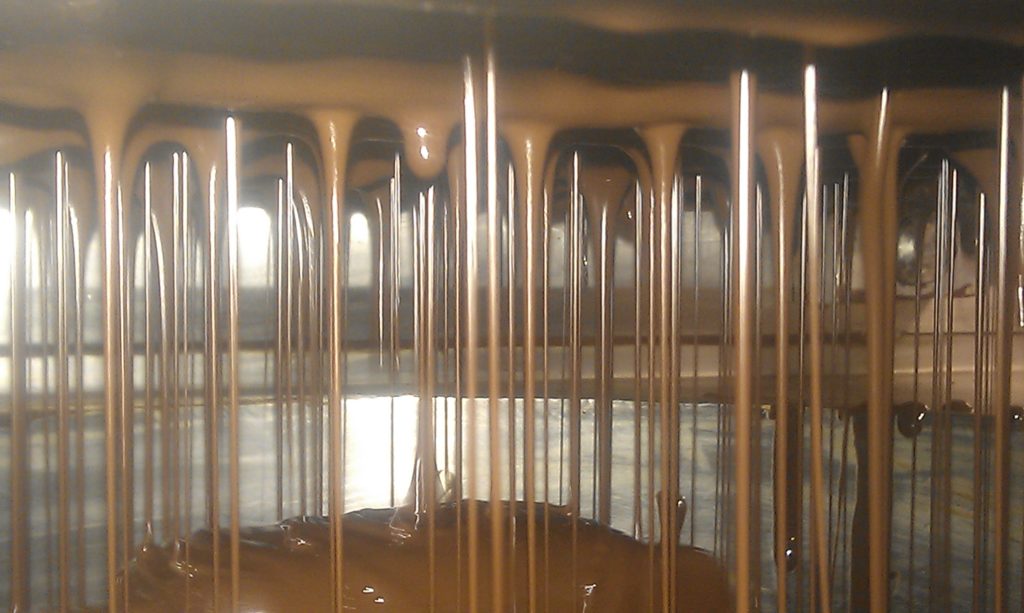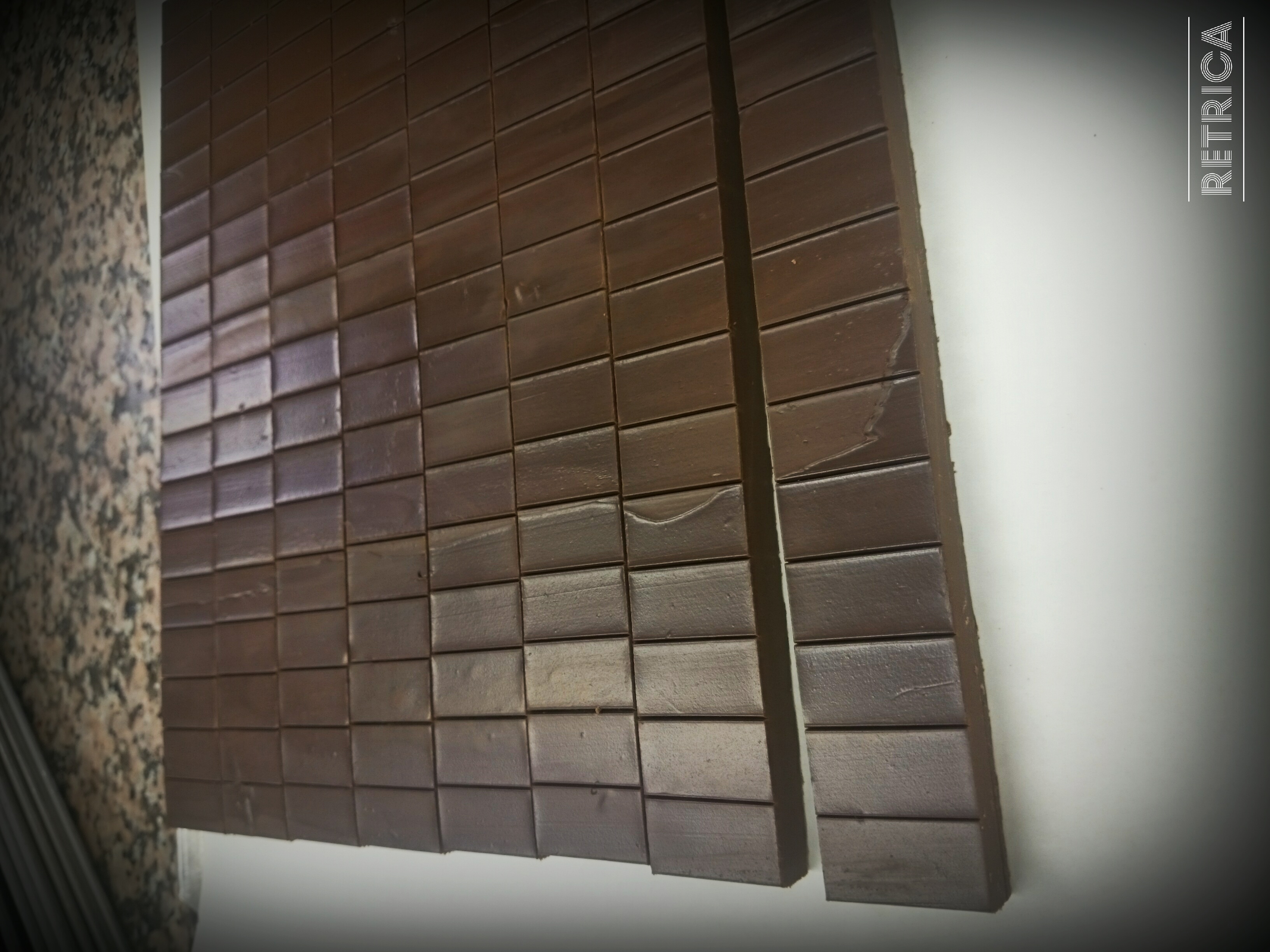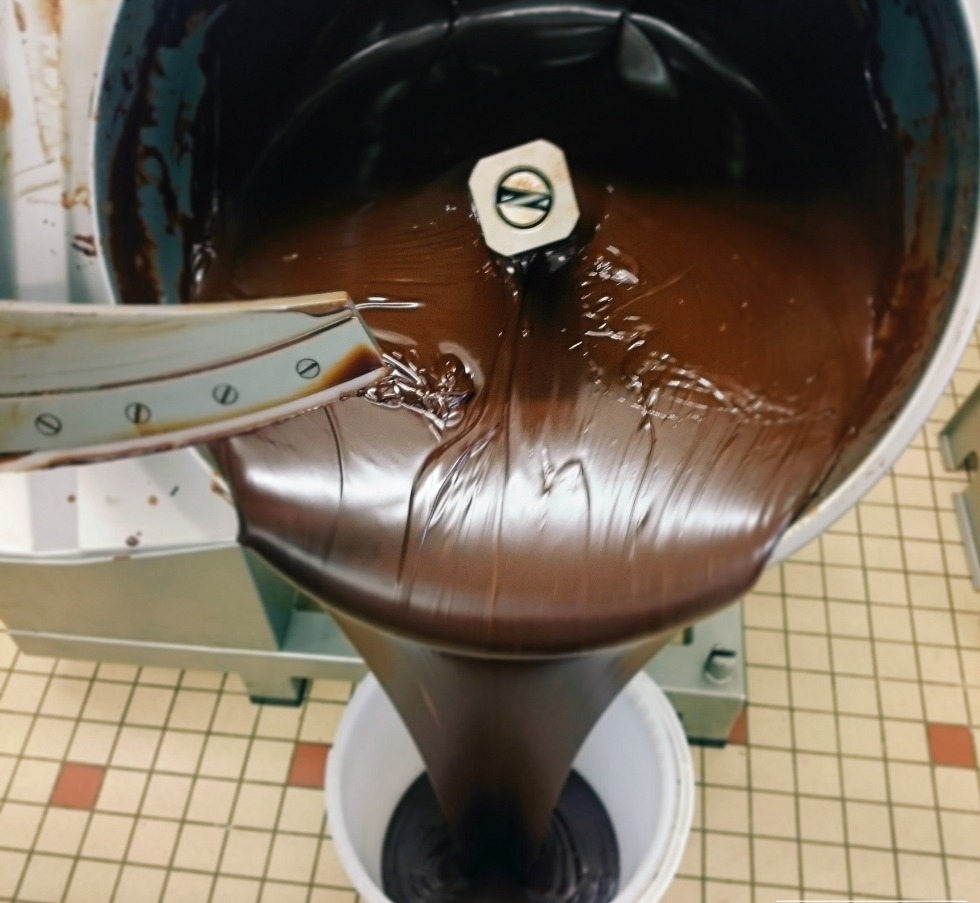What are the different types of ganache?

Introduction to the types of ganache in chocolate making
In this blog post, I’m going to explore the different types of chocolate ganache. Here As Peter P. Greweling likes to say, “Ganache is the ultimate interior of artisanal confectionery:… it can be flavored in many different ways. ”
I’m in complete agreement with him. Ganache has an impressively wide variety of smooth textures.
In my opinion, the chocolate ganache in the “Chocolatier” field can be divided into two major categories.
-The types of Ganache by their composition
-The types of Ganache by the Process and usage in chocolate making and pastry making
So … Let’s GO 😉 …
The types of Ganache by their composition.
– Classic Chocolate ganache and Recipes
The recipe, the recipe, …. please, the ganache recipe!!! , rhaaa, ……why is it so important, and at the same time, the recipes are not so important?
Around 80 to 90% of the ganache’s shelf-life is determined by the formula that makes up its recipe. The recipe also includes the ratios of ingredients as well as a list of items you’ll need. Therefore, the list of raw material suppliers is provided.
When you gain enough experience and knowledge, recipe instructions become irrelevant when cooking up the delectable chocolate ganache. Then, you can create an original ganache recipe that meets your needs, desires, and abilities.
I am aggravated by this silly proportion of cream to chocolate. Many blog entries concentrate on this amount. This is baseless since it depends on the type of chocolate and type of cream you have too. If you have 55/60% cocoa chocolate and 75/80% cocoa chocolate with similar amounts of cream, you will get two totally different ganaches. Because your 55/60% cocoa chocolate has more sugar and less cocoa butter (so fewer fats). Furthermore, the situation is the same with the cream. If you have a 30% fat cream in one hand and a 40% fat in another hand to make consistent ganache formula with similar proportions of cream to chocolate, again, a completely disparate ganache will be obtained, and its shelf life will be enormously changed. And inversement with the ratio of chocolate to cream.
And vice versa with the ratio of chocolate to cream; this is strictly the same 😉
We talk about chocolate ingredients in the ganache here, but there is really more variation of chocolate ganache. You can play with Dark Chocolate Ratio, although with the fat content, the cocoa powder content, and also concentrations of cocoa butter. We’ll see those in another post 😉
– Chocolate ganache by type of chocolate (or cocoa)
There is no specific chocolate for ganache. The most popular chocolates and cacao ingredients used in a ganache include dark chocolate, milk chocolate, white chocolate, couverture chocolate, semisweet chocolate, chocolate chips, quality chocolate, bittersweet chocolate, cocoa liquor, cocoa mass, cocoa paste, and cocoa powder. The quality, origin, and process of the ingredients will determine the richness of the chocolate flavor in your basic chocolate ganache.
Can we include Dulcey, this blond chocolate (from Valrhona), and the Pink chocolate Ruby (from Callebaut) chocolates? That’s a good question. Yes, if you consider them as chocolate couverture. Of course, you can combine several chocolates at the same time. It will also interact with. You need to recognize that these chocolates contain a great deal of sugar which does not benefit an excellent quality ganache. They are often sweeter than the white chocolate ganache.
– Chocolate Ganaches with Cream (or Water)
All the ganache are composed of chocolate and Cream (or with water … we’ll see in my next blog post). So it would be the second most important of the recipe…..mhmm, …Yes it is. You can use heavy cream, liquid cream, from cow, or the conventional one. But you also can use vegetarian ones, like coconut cream, coconut milk, almond milk, etc.
The process is still the same; you pour the hot cream (or the warm cream) over the chocolate. The heavy cream will give you a slight acid taste compared to the liquid cream. This is due to the ferment, which makes the cream thick for the heavy cream.
– Ganaches with spices, herbs, or dried fruit:
The powder of spices and herbs is added directly into the liquid (heavy cream, water, fruit puree,…). This liquid part is filtered over the chocolate, then mixed with the chocolate.
– Ganaches with fruits and/or vegetables:
Generally, the liquid part is (partially or totally) replaced by juice, fruit puree, fruit pulp, fruit, vegetable, compote, or concentrated… The latter is then incorporated into the chocolate to set your chocolate mixture.
– Egg (or protein) ganaches:
Eggs can be curdled and pasteurized either within the liquid mixture or separately. The ingredients are mixed together to create a chocolate ganache. In addition to animal proteins, alternate protein sources such as soya, vegetables, and chickpeas can also be used. The aim of it is to formulate a stable emulsion that leads to a smooth ganache.
– Salt(y) ganaches:
For me, I see two types of salty ganache:
The combination of a sweet ganache, imagine caramel, or any other beloved flavor, will please any sweet palate.
That one indeed goes with the French “Aperitif” taste, with some tangy bites. This one is truly enjoyed for a wonderful meal, maybe even with a glass of white wine. I put it out in my chocolate store as an assortment. It ended up being rather successful;-)
The salt serves as a counterbalance to the sugar that mitigates the sweetness and emphasizes other flavors present in the ganache. Furthermore, it has hygroscopic properties, meaning that it has the capacity to absorb more water than sugar. This could be advantageous in making the ganache last longer.
Of course, if you desire to decorate with it, here you go: On the top of the bonbon chocolat (after having enrobed the bonbon chocolate), drop a pinch of salt (Fleur de sel de Guérande, one of the best) ;-))
– Ganaches with alcohol:
These ganaches contain varying amounts of alcohol. The alcohol used is often brandy, liqueur or cream. However, there are many different possibilities here, too: beer, wine, etc., can also be part of the celebration.
In the past, the main role of alcohol in ganache was to help preserve it. Now, I highly recommend using high-quality spirits to add complementary alcoholic flavors to the ganache.
For example, if You want to create an Orange ganache, you’ll use orange juice the orange zest, and you can sublime it with a bit of “Cointreau” liquor or “Grand-Marnier” liquor, “Dom-Pacello” or even “L’Original Combier“
Just a tip for Ganache with alcohol:
Add the spirit at the end of the ganache process, just before pouring it into a frame or piping it into molds. Make sure not to heat it above 34°C, as alcohol-based flavors are very volatile, and you would risk losing the essential aromas.
– Sugar-free ganaches (using Polyols):
These ganaches are free of carbohydrates such as sucrose, glucose, and dextrose. Polyol is a sweetener that can be used as a substitute for sugar. Those are classified as sugar-alcohol products. They do not contain any alcohol. They have no caloric value. Their goal is to capture as much water as possible in the ganache, making it softer and increasing its shelf life.
– Vegan ganache :
The vegan ganache is a classic recipe that does not contain cream or butter, making it simple to make.
Say goodbye to dairy and hello to plant-based alternatives! Swap out cream for water or almond milk and butter for coconut oil. Plus, all our sweeteners are 100% vegan. Does that make a coconut ganache? Nope, Because you can buy some fat coconut milk deodorized.
– Flavored ganache:
The most common flavors are vanilla (in different forms: vanilla pod, vanilla extract, vanilla seeds, vanilla paste, vanilla powder,…), and cinnamon, among others… You can also add flower flavors as essential oils, such as rose, Violette, poppy, ylang-ylang,…
Heavy cream is often flavored, either directly or by infusing it with other flavors. Then the cream flavored is poured over the chocolate.

2/ The Types of Ganache by the Process and Usage in Chocolate and pastry making
– Industrial ganaches made with butter (or fat) and cocoa:
This is a mixture of melted chocolate or/and cocoa, cocoa butter, butter (anhydrous or not), and sugar (powdered sugar, fondant, glucose, invert sugar…). This product is very fatty and very sweet. It usually composes of chocolate truffle filling. However, that doesn’t mean that chocolate truffles are bad products. That says that according to the chocolate ganache recipe, the ratio of chocolate, the ratio of cream, the quality chocolate chips, and the ganache formula, you’ll get many options, by ganache texture, ganache taste, and quality ganache.
Note that there is almost no water in them or even none at all: can we call them chocolate ganache? I would say no, but that’s just me.
– Industrial ganaches made with butter (or fat) and cocoa: This is a mixture of melted chocolate or/and cocoa, butter (anhydrous or not), and sugar (powdered sugar, fondant, glucose, invert sugar…). This product is very fatty and very sweet.
These products have a very long shelf life because there is no more water. Water is replaced by bad quality fat and sugar generally. This technique is mostly used on an industrial scale.
To Acide.Be careful here – I added a bemol. No water this time around. Can we still call them chocolate ganache? I don’t believe so; that’s my personal dedication to the acid state.
– Ganaches with infusions or macerations:
Made from an infusion of aromatic plants, fruits, dried fruits, roasted fruits, or/and spices. This infusion/maceration is then added to a liquid that will be mixed with the chocolate. All the liquid can be used for the infusion/ and poured directly into the chocolate.
– Aerated ganaches:
Aerated ganache is a variety of ganache used in chocolate production. Whipping this chocolate mixture with a neutral gas produces it lighter and more voluminous. This formation gives an airy texture that can be used for assorted purposes, such as truffles, cakes, and added sweets. The aeration procedure gives it the capability to accomplish a disparate feel and fondant.
– Slabbed ganaches:
Ganache slabs are poured into a frame constructed of metal, plastic, or silicone. The ganache thus takes the shape of the frame. The ganache consistency is really specific to slab ganache. The particular qualities of slab ganache make it hard enough to be cut while the fondant melts on the palate. The most important parameter that adjusts the texture is the cocoa butter content.
It crystallizes (hardens) and is then cut into the desired shape. These types of ganache are my specialty. Of course, they can be combined with fruit puree ganaches, airy ganaches, infusions, etc. I love working with them. Like an alchemist or a… OK, I’ll stop; I’m getting carried away…
– Molded ganaches:
These ganaches are the ones that fill molds. A layer of chocolate is added to the mold beforehand. Once they harden (crystallize), they are capped with a layer of chocolate. Once unmolded, they are known for their shiny appearance.
– Dressed or piped ganache (ganache for piping) :
These ganaches are dressed to form chocolate ganache candies. This is the type of ganache for truffles.
The most famous is the “Gold” puck in chocolate making. This technical dark chocolate ganache is rich in butter and is shaped into a ball and then flattened to form a palet.
Decorative piping ganache is another common use of it in the pastry-making process.
– Liquid and semi-liquid ganaches for One-shot machine:
As their names suggest, these ganaches are very soft, even liquid. Mostly they are milk chocolate ganache, semi-sweet chocolate, caramel chocolate ganache, or with chocolate ganache. They are used to fill chocolate shells and molded candies. They are often used in “one-shot” dosing machines. That also shows the chocolate type you use in.
The ganache texture and viscosity are very crucial to have a nice result with a One-shot deposit machine.
– Ganache with variable shelf life:
Depending on the desired shelf life of the chocolate ganache, different ingredients and proportions will be used in its preparation. There are three types of shelf life: short (less than two months), medium (between 2 and 6 months), and long (more than six months).
If you want tips to extend your chocolate ganache: click here.
The ratios of ingredients and ratios of chocolate ganache
The ratios of ingredients are quite interesting, but the ratios of chocolate ganache are more:
Sugar ratio
It is a very important factor, generally containing powdered sugar, corn syrup, and invert sugar.
The more you use, the longer your ganache will last.
Fat ratio (Fat content)
It’s the same with lipids. The two main lipids used in ganache are the cacao butter content and fat milk. They are used to enhance the chocolate ganache.
Dry materials ratio
The ratio of chocolate is strongly linked with the sugar ratio because all types of chocolate are composed of sugar (often the second most important ingredient.). Most notably, the dry ingredients of the ganache are primarily comprised of chocolate. The drier the ganache is, the longer it will last.
The Ganache Formulation
The type of ganache is ultimately determined by the balancing ganache. This is where you will adjust the recipe for the thickness, sweetness, and fat level… The formulation is the heart-to-built ganache recipe.
Conclusion for types of ganache
And finally, several types of ganache can be checked off at the same time.
Let me explain: you can have a ganache infused with mint, framed and aerated, with alcohol, and milk chocolate. Also, You could have a chocolate ganache frosting for your cake, composed of vanilla seeds (to flavor ganache) and cocoa powder, with a semi-liquid consistency. As you can imagine, there are countless possibilities.
We can easily play around with the following:
The ingredients (as you can imagine)
The tools (an important part of the process, we have already talked about some of them, like the molds and the frames…)
The environment (humidity, temperature, ventilation…)
The desired final result. What are we looking for? What kind of ganache or product do we want?
As you can imagine, there are countless possibilities.
I believe I can assist you in finding your own personal journey with chocolate ganache.
😉…





